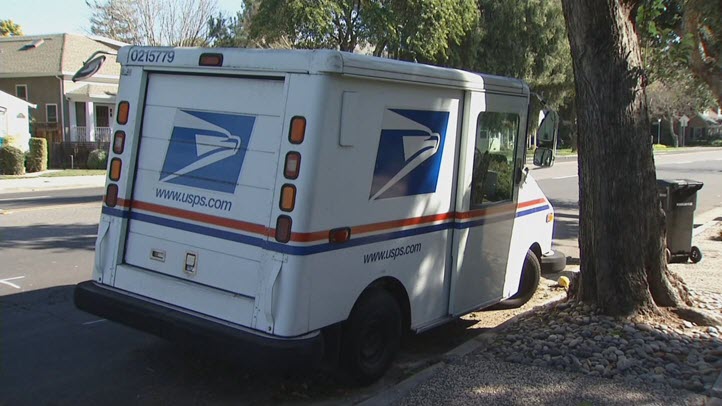Thirty minutes from the nearest town in the Sierra foothills that leads to the desert there lurks a threat to the wallet of every American consumer. It hides along and travels the rails.
This story might sound like something from an old Spaghetti Western or a move from a bandit’s playbook in the mid-19th century, but the NBC Bay Area Investigative Unit has learned that theft from freight trains traveling the rails is all too real in modern-day America.
“Happens every day,” said Ron Greene, vice president of Strategic Global operations for private cargo security company FreightWatch International, based in Austin, Tex.
Train robbery is a crime that causes billions of dollars of loss to the economy every year according to industry insiders such as Greene and federal and state law enforcement officials. These same people say that train robbery is a crime that causes billions of dollars of loss to the economy every year, and one that costs every American in higher prices on big ticket items.
“Every time they buy electronics or drugs, a percentage of that cost is to cover theft of the supply chain,” Greene said. “Some estimates are up to 5 or 8 percent (added to the cost of an item) or even more than that, because of the cost of theft in the supply chain.”
That means if you buy a high-definition television worth $4,000, you are actually paying around $320 more to account for the expected theft of some of those same items on the rails.
Federal Immigration and Customs Enforcement (ICE) officials nabbed a gang of thieves after agents found them stealing $200,000 of high-definition, flat screen, 3-D televisions in the desert east of Los Angeles by the Arizona border in June 2010.
Local
Undercover night-vision video shot by ICE agents shows four men removing the televisions from the back of a cargo container on a stopped train and then carrying the TVs on their backs through the wilderness.
To watch the video, click here.
Last year Arnold’s office helped convict the four men involved in the heist in federal court. But he admits that catching the train robbers in the act is like finding a needle in a haystack. There are more than 138,000 miles of railroad track across the country including the more than 5,300 in California, according to the Association of American Railroads. The organization reports that California moved more than six million rail carloads in 2010.
And since thieves most often operate under the cover of darkness, spotting them is virtually impossible.
“It is a hard thing to detect,” Arnold said. “We have to act on intelligence.”
According to federal documents, ICE agents used a confidential informant to gather details about the impending heist, which the thieves had planned for weeks. According to the federal documents, the robbers hid in cargo containers starting in Barstow and rode the train east to Needles where they unloaded the televisions.

Authorities say some of the hottest spots for this crime in the nation are in sparsely populated parts of California, including areas between Tracy and Manteca, places outside of Stockton, areas near Fresno, locations in the desert east of Los Angeles and sites dotting the Tehachapi pass east of Bakersfield.
Officials say thieves also work the tracks though the desert in Arizona and New Mexico as well as in the train yards around Chicago, Atlanta and New Jersey.
A local ranch supervisor outside of Bakersfield told NBC Bay Area’s Investigative Unit that the practice of train jumping is so common near his ranchland that he pointed to evidence of food and drink wrappers and toilet paper showing someone had recently hung out next to the train tracks in a desolate area in the Tehachapi pass.
Industry insiders tell NBC Bay Area that trains are at their most vulnerable in places when they travel up steep grades at low speeds, slow down at crossings or stop at train stations.
“The train is longer than the station is, the criminals get on board the trains and they will climb through the containers and through trailers finding what they want,” said Sgt. Ward Radelich of the California Highway Patrol’s Cargo Theft Interdiction Program out of Oakland.
“They will cut a hole in the top of the trailer or they’ll stage the product on top of the trailer or just outside the trailer from the flatbed it’s traveling on,” Radelich said. “And when the train pulls over, usually to let Amtrak go by, they’ll stop on a spur line, they will unload the cargo and they’ll get off and call the chase car or van to come pick them up.”
Often times rail heists are highly organized, law enforcement agencies tell NBC Bay Area’s Investigative Unit. They have recovered stolen products along with bolt cutters and saws used to break the locks and cut holes in cargo containers to offload stolen loot. Industry insiders say they have even found backpacks full of several days’ worth of food and water left behind in the train cars.
“They shop the trains as they are moving along,” Radelich said. “That’s why they can spend up to a couple of days in a train as they shop each container.”
Despite what law enforcement characterizes as a prevalent crime, the full extent of the problem is not known because companies do not make their crime statistics public. A half-dozen major rail companies all declined to speak about this issue for the record. But several mid-level officials with three different train companies anonymously told the Investigative Unit that this is a serious problem and one that is growing despite best efforts to stop it.
“They don’t want to talk about it, they don’t publish data. The size of the problem is not known, not published, held very closely by the rail companies,” Greene said. “We are talking about criminals allowed to operate freely; it’s a problem.”
In federal court documents regarding the cargo heist outside of Los Angeles, an ICE agent wrote that one of the men said that “doing these types of jobs is better because you receive less jail time than one would for dealing drugs.”
And rail theft continues to rise in other parts of the world, industry insiders tell NBC Bay Area.
According to a report published by FreightWatch earlier this year, thieves in Mexico are increasingly causing train derailments in order to steal loads in areas where trains travel at high speeds. To accomplish this, the criminals remove or break railroad ties or place obstacles on the tracks.
Arnold says that’s not too far off what happens in other parts of America.
“They do a lot of crazy stuff,” he said. “There are places elsewhere in the country where they will cut the air hose on moving trains to activate the brakes so they can stop the train and steal the goods.”
If you have a tip for the Investigative Unit, email theunit@nbcbayarea.com or call 888-996-TIPS.



